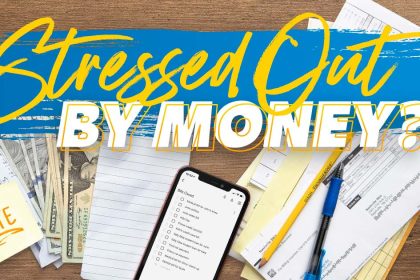Did you know that when you submit a job application online, it’s probably read and filtered by a robot before a human ever sees it? No, this isn’t Star Wars, folks—just the 21st century job market. And that “robot” is something called an applicant tracking system (ATS).
There’s no way around it, but there are a few things you can do to help your application pass through the system to get to the next stage (human interaction)! Here’s everything you need to know about ATS so you can beat the bots and get a real, live person to look at your resumé.
What Is an Applicant Tracking System?
An applicant tracking system is a type of software that helps filter and sort online job applications so recruiters can find the people who are the best fit for their company. Since most companies get hundreds—if not thousands—of applications, an ATS is a time-saving tool for HR because it can filter out spam and applicants who aren’t a good match, store resumés for future job openings, check references, and do other things that help with the hiring process. (Basically, it separates the sheep from the goats.)
But the downside is that sometimes a perfectly good application can slip through the cracks because it doesn’t meet all the criteria the ATS is looking for. Luckily, there’s a way to help prevent that!
How Do Applicant Tracking Systems Work?
Every ATS is different, but when you submit an application online through an ATS, you’ll usually be asked to answer some “knockout questions.” These can be short answer, yes/no or other simple questions that are used to screen candidates and quickly filter out the ones that are a definite no. Think of these as deal breakers you might ask about on a first date (not a Wolverines fan? You’re out). For example, if the company really needs someone who’ll work weekends, but there’s no way you can or want to, then you’re just not a good fit for the job, and the ATS will reject your application.
If knockout questions aren’t part of the company’s ATS—or if your answers are compatible with what they’re looking for—your resumé, cover letter, background info and contact info are uploaded into the system and can then be used to keep narrowing down the candidate pool and help recruiters continue the search.
How to Beat an Applicant Tracking System
Even if your application does get uploaded into the database, there are still some things that can stop your resumé from making it to an actual recruiter. Here are five tips to help your resumé beat the ATS!
1. Use the keywords from the job description.
In this situation, keywords are the hard and soft skills that the recruiters are looking for in a candidate. For example, a job description might list experience with Excel or fluent in Spanish as requirements. Those are keywords you want to make sure you include on your resumé because recruiters usually search for candidates based on those exact terms. If you can work them into your resumé more than once in a way that feels natural, go for it. And be honest! The company will find out pretty quickly if you don’t have all the qualifications you said you did.
One more pro tip: If the keyword you want to use can be abbreviated, use both the spelled-out version and the abbreviated version. For instance, if you’re talking about your college degree, say Bachelor of Fine Arts (BFA) instead of just BFA.
2. Edit your resumé to fit the job you’re applying for.
Because you’ll be tailoring your resumé based on the keywords, you definitely won’t want to keep submitting the same document over and over to multiple companies. Not only will it be harder to beat the ATS because you might not have the exact right keywords from the job description, but any recruiter who sees your resumé will be able to tell if it’s just a generic one that you send to everyone. And that sends the message that you don’t really care about working for their specific company. The Why I Want to Be Here section in my free Resumé Guide can help show recruiters that this isn’t just a cookie-cutter resumé.
3. Don’t apply for too many roles in the same company.
Along the same lines as that last point, don’t apply for 20 different roles within the same company. It’s okay to apply for multiple roles if the positions are similar, but don’t apply to be a marketer, copy editor, customer service representative and developer at the same organization (even if you have the skill set for all of the above, which is seriously impressive). It just looks like you’re not sure what you want to do, and it will definitely raise some flags.
4. Make your resumé simple and clear.
A fancy resumé with a ton of formatting will not make the ATS happy. Here are some ways to optimize your resumé:
- Clarify your previous job titles. If you were an account manager at one company, that could be the same thing as a project manager at another company. So, make sure you spell out what the job involved and what tasks you did.
- Don’t put important details (like contact info) in the header or footer.
- Avoid graphics, charts and other artsy stuff.
- Use simple, standard fonts and bullet points.
- Don’t be sneaky. Some people will tell you to copy and paste the entire job description at the end of your resumé and change the text color to white so all the keywords will be in there. Don’t do it. The recruiters will be able to see it, and you’ll look like a jerk for trying to cheat the system.
5. Follow instructions.
Whatever instructions are given throughout the application process, follow them! If they’re asking for your documents to be in a specific format, use that format. If they tell you they want a cover letter, give them a cover letter. (Side note: Don’t ever put see that information in my cover letter in your resumé. If the info is called for, spell it out again.) The more closely you follow instructions, the more likely you are to get through the ATS to the next stage in the hiring process.
How to Test if Your Resumé Would Pass an Applicant Tracking System
Because every ATS is different, there’s no surefire way to see if your resumé would pass the test. But there are a few ways to check for problems (buckle up—we’re about to get technical).
You deserve to win at work. Our new book and assessment will show you how.
One way you can do this is to go into Microsoft Word and copy and paste the content from your resumé into a plain text document. Or you can convert your current resumé document into a plain text document by clicking Save As and then changing the format to .txt instead of .docx. If the new version is missing any important details from the original or the characters look different or disorganized, then your original formatting is probably not compatible with an ATS, and you’ll need to format it differently.
You can also try uploading your resumé into an online ATS scanner—there are plenty of free ones out there. Just be cautious and make sure it’s a reputable site before giving away any personal info.
It might take some trial and error before getting your resumé format just right, but it will be worth it when you beat the ATS so a human being can see your resumé—and it will move you one step closer to getting your dream job. You’ve got this! For more tips on building a resumé that will wow any hiring manager, check out my free Resume Guide!
Read the full article here


















